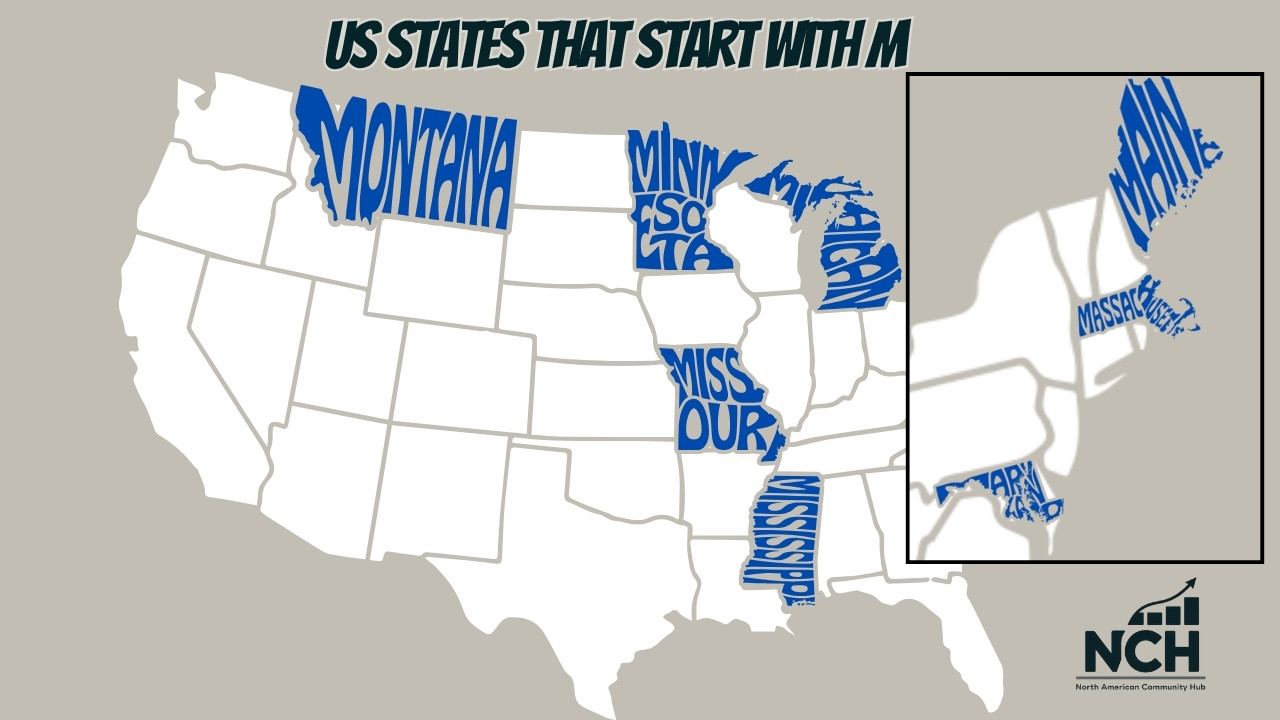After covering the US states that start with L, the next group begins with M. There are eight of them, each tied to a different part of the American story.
Some of them are known for shaping the early history of the United States, while others built modern industry, along with those who became renowned for their land and people.
Here are the US states that start with M. Learn more about their interesting history, geography, and surprising facts.
1. Maine
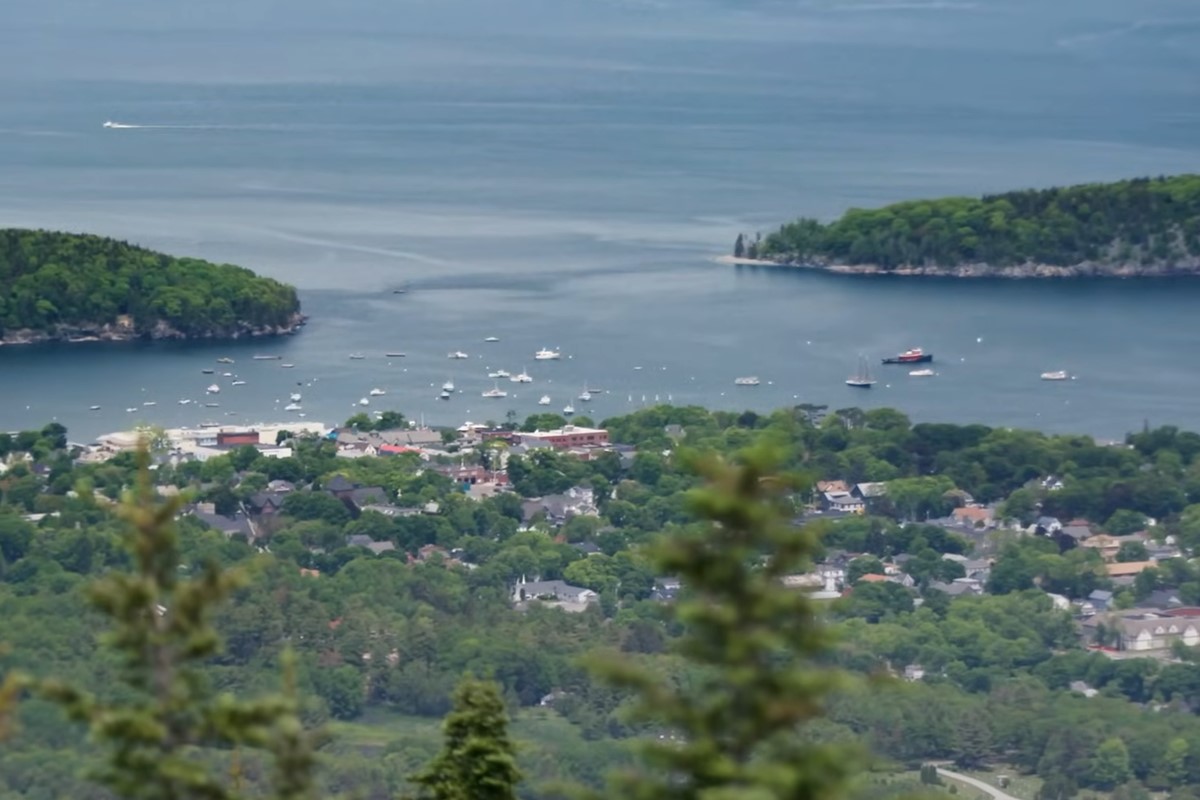
Maine sits where America greets the sunrise, known for cold mornings, rugged coasts, and towns that still live by the tide. Every corner of the state tells a story about endurance, independence, and pride.
History
Maine became the 23rd state in 1820 through the Missouri Compromise. Before independence, it was part of Massachusetts. Early settlers relied on fishing, shipbuilding, and timber industries that sustained the region for centuries.
By the 1800s, cities such as Portland, Bangor, and Bath stood at the center of Atlantic trade. Maine also sent strong leaders to national stages, including Joshua Chamberlain, a Civil War hero at Gettysburg and later a respected governor.
The 20th century brought new chapters through paper mills, railroads, and the tourism boom that reshaped its small coastal towns.
Geography
The state stretches across more land than the rest of New England combined. Thick forests cover nearly 90 percent of its area, making it the most forested state in the country.
Its coastline, jagged and broken into bays, reaches over 3,400 miles when every inlet and island is counted.
Major Natural Highlights
View this post on Instagram
- Acadia National Park, with Cadillac Mountain, which is one of the first places in the U.S. to see the sunrise.
- Mount Katahdin, the highest peak in Maine and the endpoint of the Appalachian Trail.
- Moosehead Lake, a vast northern lake known for fishing and clear water.
- Kennebec River, vital for early trade and logging transport.
Surprising Facts
- Maine is the only U.S. state that borders exactly one other state, New Hampshire.
- It produces over 90 percent of the nation’s lobster supply each year.
- More than 3,000 islands lie off its coast.
- The state grows nearly all of America’s wild blueberries.
- Eastport, Maine, is the easternmost city in the country.
- Author Stephen King bases many of his stories in Maine, using real local spots like Bangor and Derry as inspiration.
@everywherewitheva Taking a Stephen King inspired road trip? Bangor (Derry) welcomes you! 🎈🤡 —My full video with detailed additional locations and hidden gems is on YT under my username! 😉 #stephenking #stephenkingsit #stephenkinghouse #itchapter2 #it #bangor #bangormaine #derrymaine #petsematary #filminglocation ♬ original sound – Eva Everywhere
Along with Maryland and Massachusetts, it is at the top when it comes to states with the highest monthly utility bills.
2. Maryland
A small state with an outsized role in both past and present. Maryland connects North and South, coast and capital, small-town charm and urban speed. Its mix of history, geography, and people makes it one of the most balanced portraits of the country.
History
Maryland began as an English colony in 1634, founded by Cecilius Calvert, the second Lord Baltimore, as a refuge for Catholics escaping persecution. Its early economy grew through tobacco plantations and trade along the Chesapeake Bay.
During the American Revolution, Maryland signed the Articles of Confederation and played a role in drafting the Constitution.
Baltimore later became a symbol of national pride when Francis Scott Key wrote The Star-Spangled Banner during the War of 1812 after witnessing the British bombardment of Fort McHenry.
In the Civil War, Maryland sat at the border between Union and Confederate territories. Though it remained in the Union, the Battle of Antietam in 1862 became the bloodiest single day in American military history.
Geography
Maryland covers a small area but holds nearly every type of landscape in the eastern United States. The Chesapeake Bay splits the state in two, shaping local life and economy.
Main Attractions
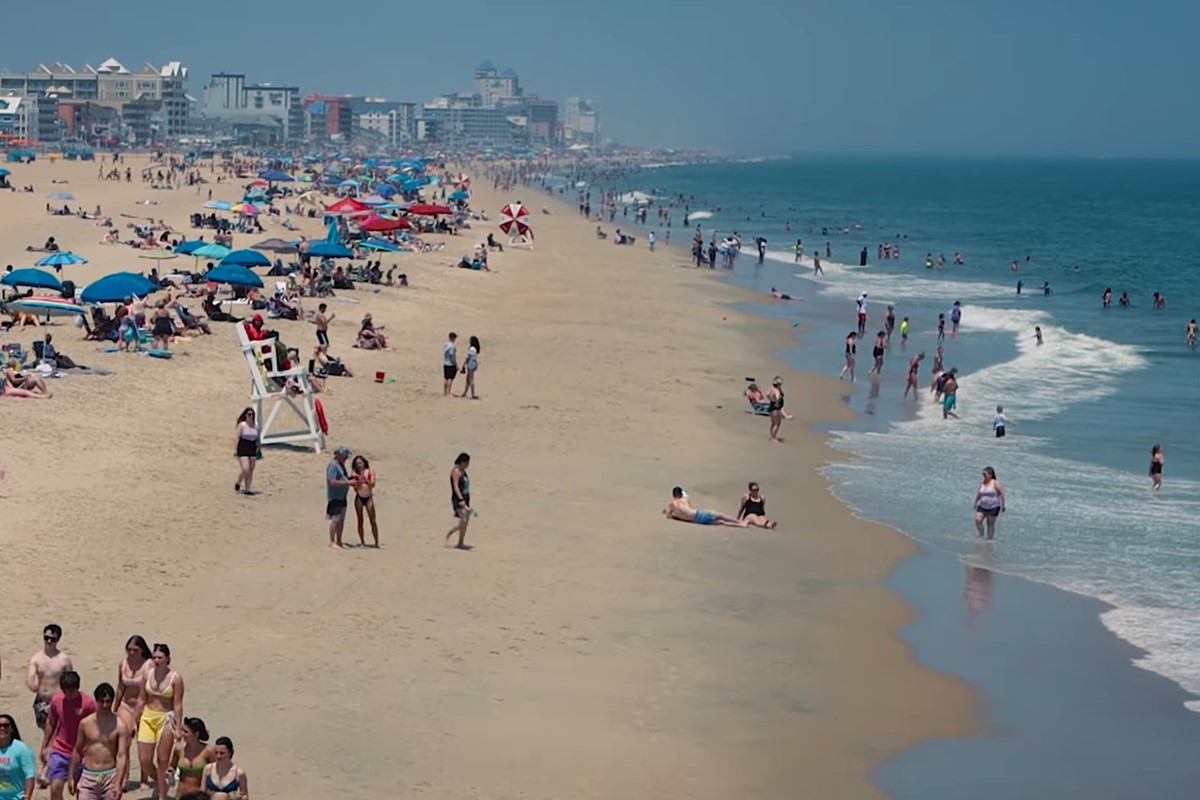
- The Chesapeake Bay, one of the largest estuaries in the world.
- Appalachian Mountains in the west, bringing cooler climates and mountain towns.
- Atlantic beaches on the eastern shore, including Ocean City, a popular tourist spot.
- Patapsco River and Baltimore Harbor, both critical to Maryland’s economy.
Surprising Facts
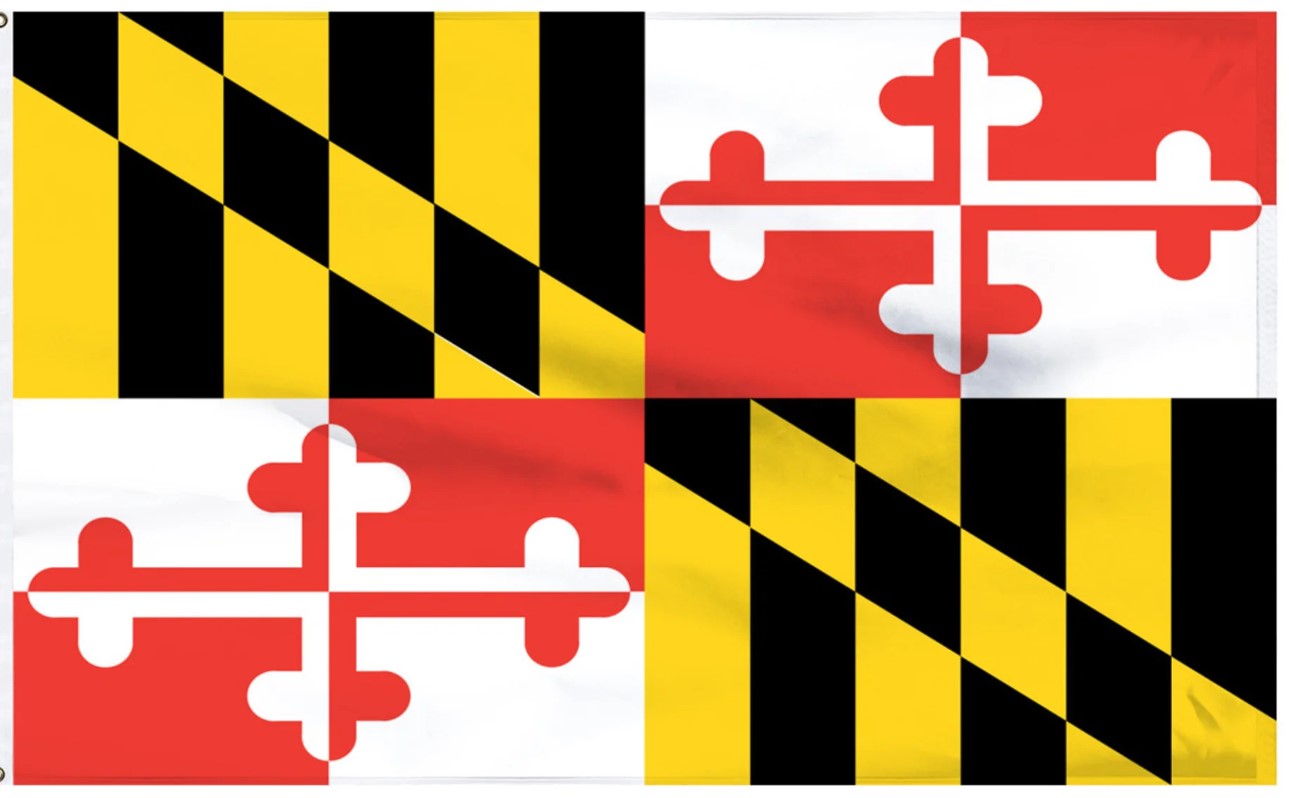
- Maryland’s official sport is jousting, a tradition dating back to the 17th century.
- The first railroad station in the U.S. opened in Baltimore in 1829.
- Maryland is nicknamed “America in Miniature” for its variety of terrain, mountains, plains, and coast all within a few hours’ drive.
- The U.S. Naval Academy was founded in Annapolis in 1845.
- Baltimore’s Inner Harbor is home to the first umbrella factory and early innovations in canned goods.
- The state flag is based on the coat of arms of the Calvert and Crossland families, unique among U.S. flags for its heraldic design.
- It is ranked second in the list of the happiest states in the US.
3. Massachusetts
The story of America cannot be told without Massachusetts. It stands as the birthplace of revolution, education, and some of the country’s earliest ideas of freedom.
Cobblestone streets, coastal towns, and old universities still tell stories that shaped the nation.
History
Massachusetts began as a Puritan colony in 1620 when the Pilgrims landed at Plymouth. Boston quickly grew into a center of trade, politics, and culture.
Events such as the Boston Massacre and the Boston Tea Party fueled the push toward independence.
The state played a central role in the American Revolution, sending figures such as Samuel Adams, John Adams, and Paul Revere into the nation’s history.
In the 19th century, Massachusetts became a hub of manufacturing and education.
Textile mills powered the economy, while Harvard and MIT built the foundation for modern science and research. The abolitionist movement also grew strong here, giving rise to leaders who fought to end slavery.
Geography
Massachusetts covers coastlines, farmlands, and mountain ranges within a small area. The Atlantic Ocean shapes its eastern edge, while the Berkshire Mountains rise in the west.
Main Landmarks
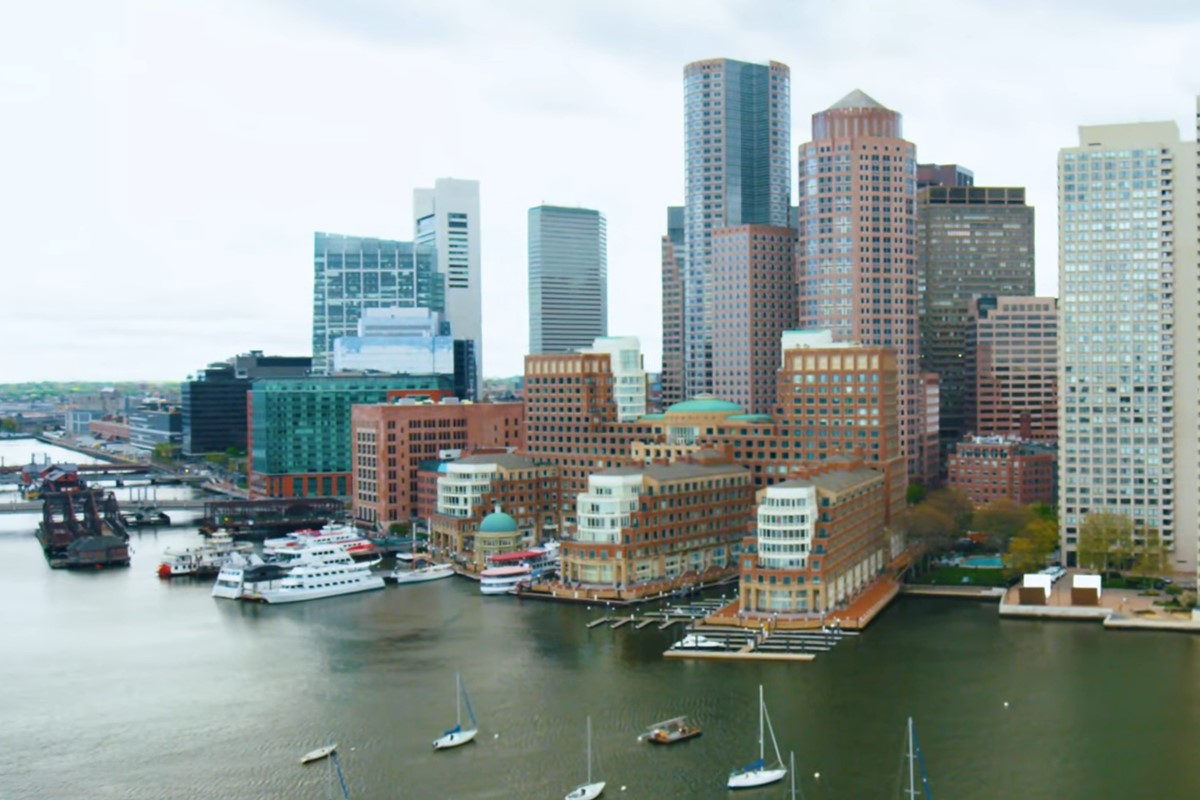
- Cape Cod, a narrow stretch of land known for beaches and lighthouses.
- Boston Harbor, where the Tea Party took place in 1773.
- Martha’s Vineyard and Nantucket, islands famous for fishing and tourism.
- Mount Greylock, the state’s highest point.
Geography played a key role in trade, fishing, and shipbuilding, helping early settlers thrive along the coast.
Surprising Facts
- Massachusetts was the first state to legalize same-sex marriage in 2004.
- The first public school in America opened in Boston in 1635.
- Basketball and volleyball were both invented here.
- The state produces cranberries as one of its top crops.
- The town of Quincy built the first commercial railroad in the United States.
- The first Thanksgiving celebration took place in Plymouth in 1621.
- If we don’t count D.C., Massachusetts is the US state with the highest monthly salary.
4. Michigan
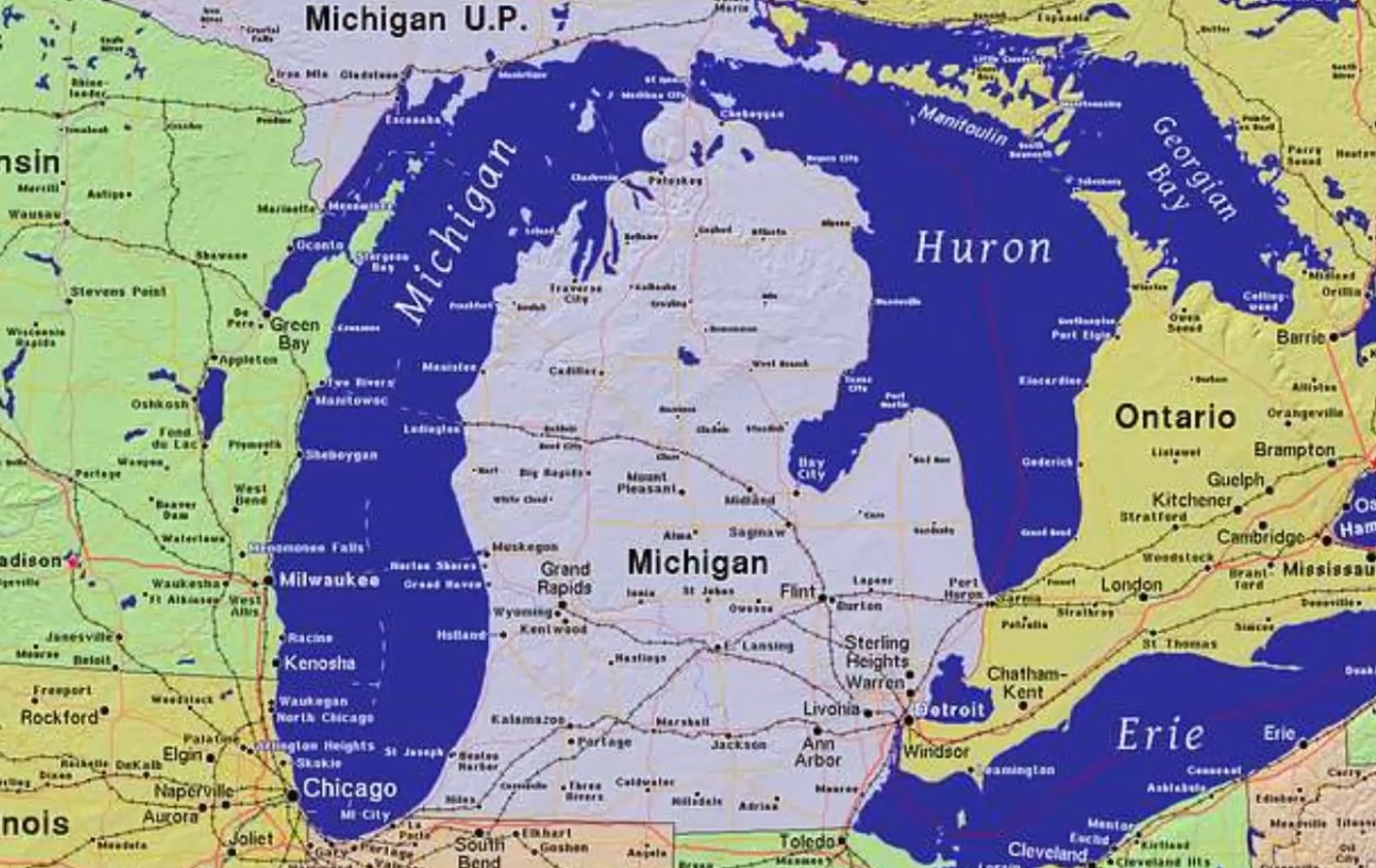
A state surrounded by water on nearly all sides, Michigan stands as the heart of the Great Lakes region. It blends industry, natural beauty, and strong local pride.
Detroit, which is the largest city in Michigan, reshaped global transportation and music forever.
History
The state entered the Union in 1837. Native American tribes, including the Ojibwe, Odawa, and Potawatomi, first called the region home.
French explorers arrived in the 1600s, followed by British and American settlers.
Detroit grew into the center of the auto industry in the early 20th century, earning the nickname “Motor City.” Companies like Ford, General Motors, and Chrysler transformed how the world traveled.
Another very important fact about Michigan is its role in labor rights, with union movements defining fair work practices nationwide.
The musical legacy began with Motown Records, founded in Detroit in 1959. It launched artists such as Stevie Wonder, The Supremes, and Marvin Gaye, leaving a lasting mark on American culture.
Geography
Michigan is the only state divided into two peninsulas, the Upper and the Lower, connected by the Mackinac Bridge. It borders four of the five Great Lakes, giving it the longest freshwater coastline in the United States.
Most Popular Spots
@animal.world1901 This is the Sleeping Bear Dunes in the United States #sleepingbeardunes #michigan #usa #us #knowledge #explore ♬ original sound – Mr CamCat
- Lake Superior, Lake Michigan, Lake Huron, and Lake Erie, all shaping trade and tourism.
- Sleeping Bear Dunes National Lakeshore, known for its sweeping sand dunes.
- Isle Royale National Park, accessible only by boat or seaplane.
- Detroit River, an important waterway for shipping and recreation.
Forests cover more than half the state, and the Upper Peninsula remains one of the most untouched natural areas in the Midwest.
Surprising Facts
- Michigan has more than 11,000 inland lakes.
- No person in the state is ever more than six miles from a natural body of water.
- The state is the nation’s top producer of automobiles.
- Detroit built the first concrete road in America in 1909.
- Michigan has over 120 lighthouses, more than any other state.
- The five-dollar hot-and-ready pizza concept was created by Little Caesars, founded in Michigan.
5. Minnesota
Minnesota sits in the upper Midwest, where lakes and forests shape everyday life. Winters are long, summers are bright, and people take pride in both.
The state built a strong reputation through hard work, community spirit, and steady progress in education and industry.
History
Native Dakota and Ojibwe tribes lived across the region long before settlers arrived. French explorers reached it in the 1600s, and Minnesota became the 32nd state in 1858. The Mississippi River starts here, making it a natural center for trade and transport.
By the late 1800s, Minneapolis and Saint Paul grew into busy industrial hubs. Grain milling, lumber, and iron ore helped build the state’s economy. In the 20th century, it became known for innovation in healthcare, technology, and public service.
Geography
Minnesota borders Canada and four U.S. states. It covers over 86,000 square miles of lakes, rivers, and farmland. The state has four distinct seasons, with cold winters and short, mild summers.
Major Geographic Points
@alex.haraus MIDWESTERNERS UNITE #minnesota #boundarywaters #freshwater #outdoorsy #uspoliticsnews Happy to team up on this vid with our friends at @savetheboundarywaters ♬ original sound – Alex Haraus
- Lake Superior, the world’s largest freshwater lake by surface area.
- Boundary Waters Canoe Area Wilderness, one of the country’s most scenic outdoor regions.
- Mississippi Headwaters, located in Itasca State Park.
- Voyageurs National Park, near the Canadian border.
Surprising Facts
- The Mall of America is large enough to hold 32 Boeing 747s inside.
- The state produced the first Tonka toy truck in the 1940s.
- Target, 3M, and General Mills were all founded here.
- SPAM was created in Austin, Minnesota, in 1937.
- The first open-heart surgery in the United States took place at the University of Minnesota.
- It is ranked as 2nd among US states with the most affordable health insurance.
6. Mississippi
Mississippi lies along the river that shares its name. The state is known for deep roots in American music, long traditions in farming, and its central place in the nation’s social and cultural history.
History
It became a state in 1817. Native American tribes such as the Choctaw and Chickasaw lived here for centuries before European settlement. Cotton plantations grew fast through slave labor, creating a powerful but divided economy.
After the Civil War, Mississippi faced decades of recovery and racial conflict. During the Civil Rights Movement, it became a center of national focus. Events such as the murder of Medgar Evers and the Freedom Summer of 1964 drew attention and change that shaped the country.
Geography
The Mississippi River runs along the western border, and the Gulf of Mexico meets the southern edge. Much of the land is flat and fertile, making it ideal for farming.
Pine forests stretch across the south, while the Delta region holds rich soil and a strong cultural influence.
Most Attractive Landmarks
- The Mississippi River, vital for trade and travel.
- Natchez Trace Parkway, once a Native American trail.
- The Delta, where blues music was born.
- Biloxi and Gulfport, known for seafood and the coast.
Surprising Facts
- Mississippi is the birthplace of the blues, with roots that shaped rock, jazz, and country music.
- The Teddy bear originated here after President Theodore Roosevelt refused to shoot a captured bear in 1902.
- The first heart and lung transplants in the United States took place at the University of Mississippi.
- The state leads the nation in church attendance per capita.
- The Mississippi River basin drains water from 31 U.S. states.
- Vicksburg National Military Park preserves one of the most complete Civil War battlefields.
7. Missouri
Missouri sits in the center of the country, where the Midwest meets the South. It has always been a crossroads for trade, travel, and culture. From the Mississippi River to the Ozark Mountains, the state reflects both frontier grit and modern growth.
History
Missouri joined the Union in 1821 as part of the Missouri Compromise. St. Louis became a key city during America’s westward expansion, serving as the “Gateway to the West.” The Lewis and Clark expedition started here in 1804, marking the beginning of exploration toward the Pacific.
During the Civil War, Missouri was a border state with divided loyalties. It sent soldiers to both the Union and Confederate armies. After the war, cities such as St. Louis and Kansas City grew rapidly through trade, agriculture, and railroads. The early 20th century brought new industries, sports, and music, making Missouri a cultural center for the Midwest.
Geography
Missouri borders eight states, more than any other except Tennessee. The Mississippi and Missouri Rivers cut across its landscape, shaping cities and commerce. The Ozark Mountains in the south are filled with caves, rivers, and lakes.
Main Tourist Attractions
View this post on Instagram
- The Ozarks, a region of hills and clear streams popular for outdoor recreation.
- Mark Twain National Forest, named after the famous author from Missouri.
- Lake of the Ozarks, one of the largest man-made lakes in the United States.
- St. Louis Arch, symbolizes the role in westward expansion.
Surprising Facts
- Missouri has over 6,000 caves, earning it the nickname “The Cave State.”
- The ice cream cone was first introduced at the 1904 St. Louis World’s Fair.
- Anheuser-Busch, one of the largest beer companies in the world, was founded in St. Louis in 1852.
- The state produces more lead than any other in the country.
- Kansas City has more fountains than any city except Rome.
- Famous Missourians include Mark Twain, Walt Disney, and Harry S. Truman.
8. Montana
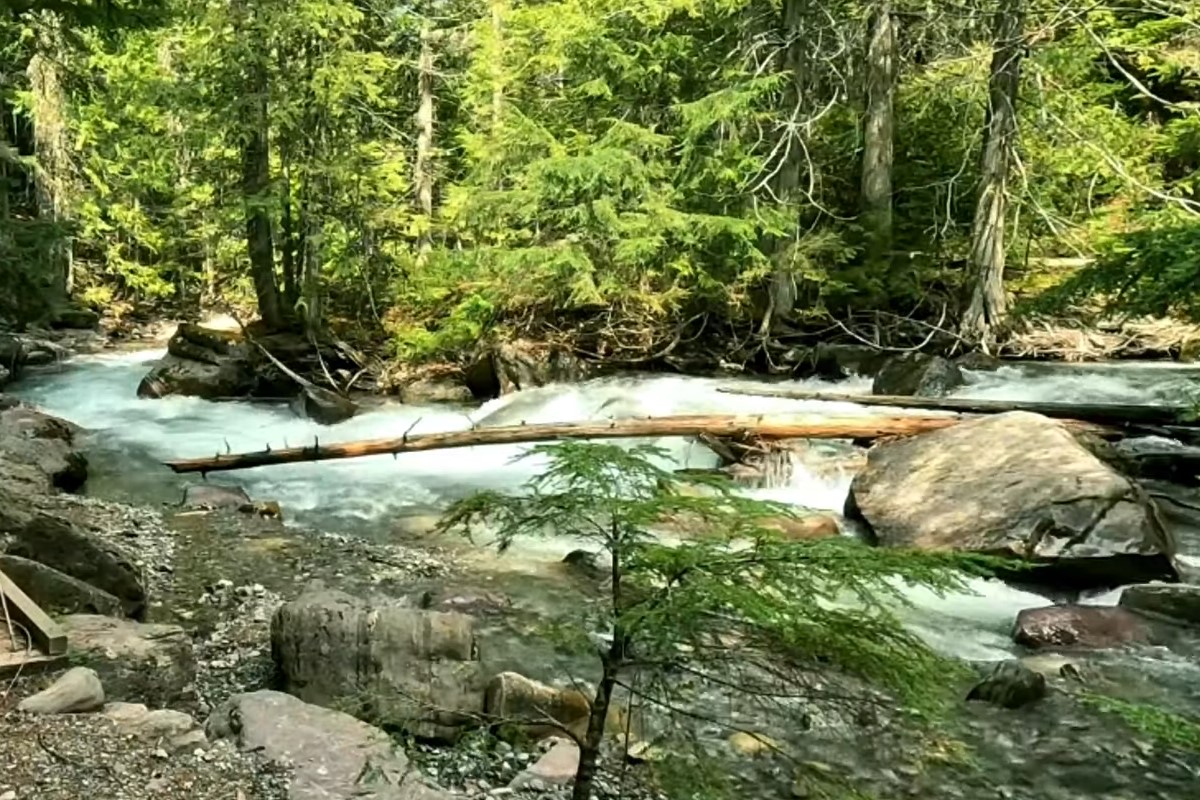
Montana stretches wide across the northern plains and mountain ranges of the West. It is a land of open space, clear air, and powerful scenery. Ranches, forests, and national parks define its landscape and its way of life.
History
Native American tribes such as the Crow, Blackfeet, and Sioux lived across Montana long before European contact. Lewis and Clark passed through the area in the early 1800s, mapping rivers and mountains that few outsiders had seen.
Montana became a state in 1889. The discovery of gold, silver, and copper brought settlers and miners from across the country. The railroads followed, connecting the state to the rest of America.
Agriculture and cattle ranching later became the backbone of its economy, supported by a strong conservation movement that protected much of its natural beauty.
Geography
Montana is the fourth-largest state by land area but one of the least populated. It holds parts of both the Rocky Mountains and the Great Plains. The name “Montana” comes from the Spanish word for mountain.
Important Natural Landmarks
- Glacier National Park, famous for mountain peaks and alpine lakes.
- Yellowstone National Park, partly within Montana’s southern border.
- Flathead Lake, one of the largest freshwater lakes in the western United States.
- The Continental Divide, cutting through the state’s western edge.
Surprising Facts
- Montana has more cattle than people, with about three cows for every resident.
- The state’s longest river, the Missouri, begins in western Montana.
- The smallest river in the world, the Roe River, is also found here.
- Paleontologists have uncovered some of the most complete dinosaur fossils ever found in Montana.
- The Going-to-the-Sun Road in Glacier National Park is one of America’s most scenic drives.
- Big Sky Country remains one of the least light-polluted areas in the nation, ideal for viewing stars.
- Montana is ranked 5th among US states that drink the most alcohol.
Final Thoughts
Each state tells a story about the country itself. People, land, and history connect through struggle, progress, and pride. Together, they reveal how much strength and variety shape the United States from coast to coast.
Next in the series about US states by letter are states that start with N.


